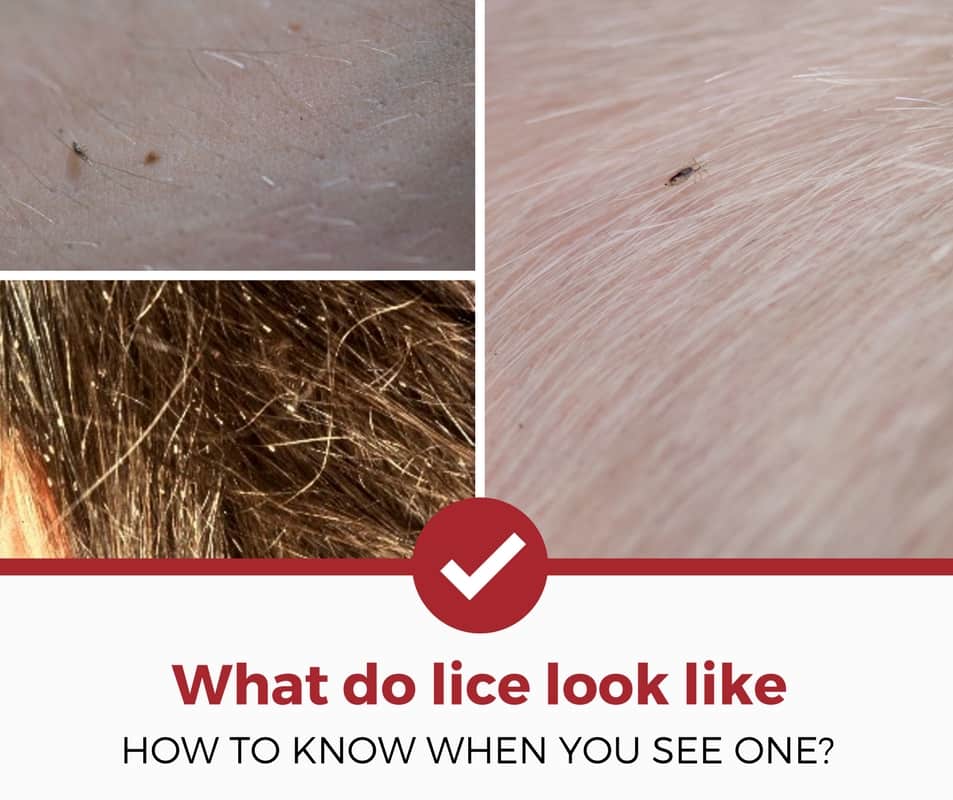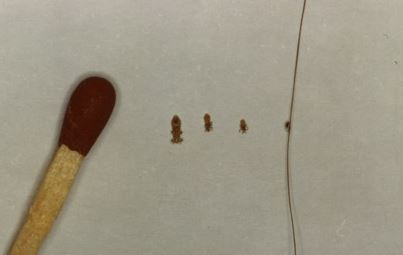Curious to know what lice look like up close?
If you start to have an itchy head, then you might be worried about head lice.
...and for good reason!
Head lice are a common problem in the United States with between6,000,000-12,000,000cases per year.
Sometimes people can easily tell that they have a problem because all of their hair seems to move, but most individuals have a harder time determining if lice are there because lice tends to resemble other stuff (like dandruff).
If you think you have lice, the information below can help you determine if you have an infestation and what you can do to treat it and prevent a future problem.

Our #1 Ranked For:Termites,Bed Bugs, and Larger Infestations

Our #1 Ranked For:Ants, Roaches, Spiders, and Rodents Issues
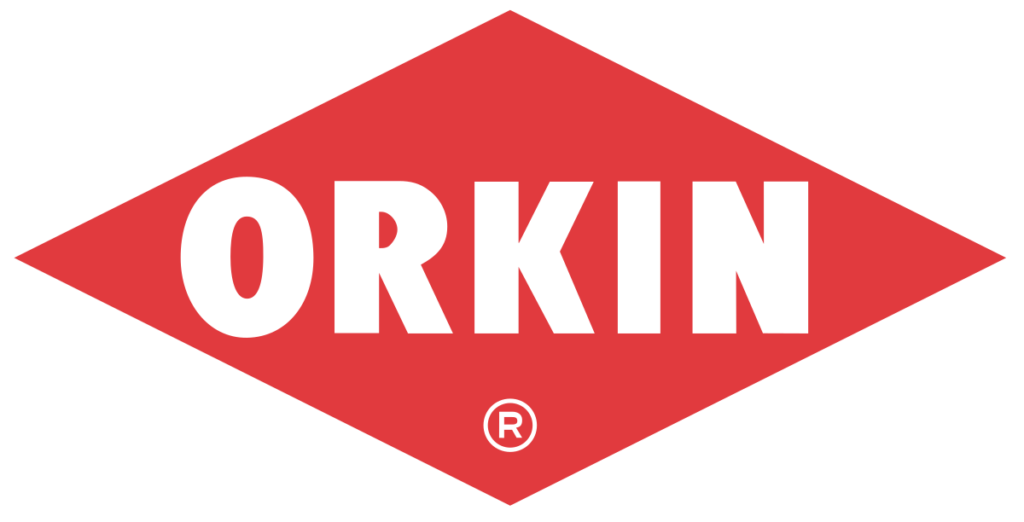
Our #1 Ranked For:Mosquito Removal, Fleas, Ticks, Wasps, And Other Stinging Insects
What Lice Look Like at Each Stage of their life cycle
For those who don't already know, lice is the plural form of louse (some people think they're entirely different things).
A louse is a tiny, bloodsucking parasite which lives on the scalps of humans and feed on people. Each louse is roughly the size of asingle sesame seedand ranges in color from white to tan to gray.
When trying to figure out what your lice looks like, remember that there are 3 stages a louse will undergo and they all look different: Nits, Nymphs, and Adult.
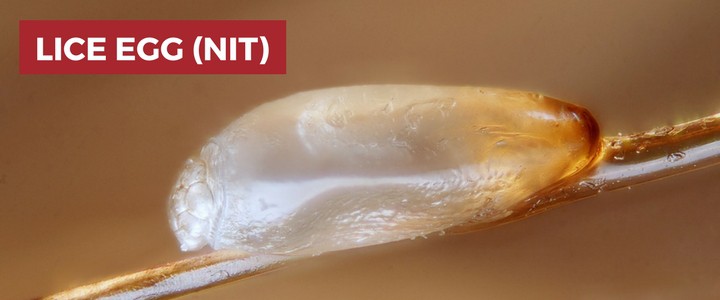
Nits:Nit is another term for a louse egg. Nits areroughly the size of a knotin a strand of hair and are difficult to see. They latch onto hair follicles and can be difficult to remove without proper treatment.
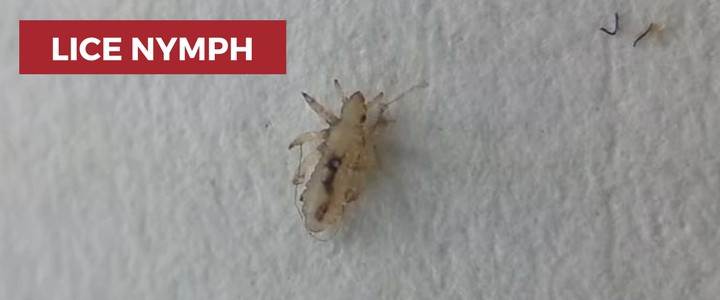
Nymphs:Nymphs are the next stage of than adults and look like smaller versions of a full-grown louse. They range from 1-2 mm in length, which is smaller than the size of the tip of your pencil.

Adult Lice:Lice have six legs with feet like hooks that grip onto single strands of hair. Their "hook grip" allows them to move through your hair easily.
Take a look at the below video to get a sense of how they move and what to look out for.
How Long Do Lice Live?
Thankfully, lice have short lifespans.
An adult louse only livesroughly a month, or 30 days, while on a human head. If the lice fall out or are somehow removed, then they can only last 1-2 days away from the scalp. Nits take roughly 8-9 days to hatch and aren't a problem until the lice emerge.
Lice Reproduction
Lice reproduce quickly and have a lot of young. Each female louse can have between50-150傻瓜在一生。这意味着that a single pair of lice can have 150 children, which can then reproduce as well. Nits are attached to hair using a special, sticky, glue-like substance and are roughly only1/4 inch awayfrom the scalp.
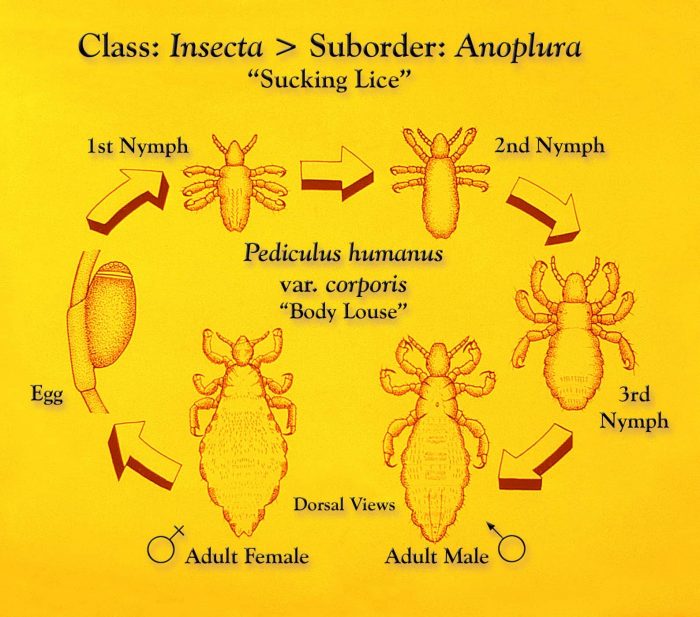
Solve your pest problem right now
Connect with a local pro todayHow To Tell If You Have Lice
It should be pretty easy to tell if you or a loved one have a lice infestation. Below are some of themost common signsthat a lice problem exists.
- You can see movement from the lice on your head.
- You start to suffer from an itchy scalp, dandruff, or have dried blood under your hair.
- Using a magnifying glass, you can see the lice in your hair.
- You find nits on your pillow or brush.
The only way to truly tell if someone has lice is to see the infestation. If you have trouble identifying lice, use a magnifying glass.
You should be able to see small, six-legged bugs moving around close to the scalp. If you have an itchy scalp and flaking without seeing any pests, you might just havedry skinand should consider a dandruff shampoo.
Want To Solve Your Pest Problem Now?
20 of The Best Pictures and Images of Lice
1. For the first picture we have eggs cocoons attached to hair follicles as well as an adult louse full of blood!
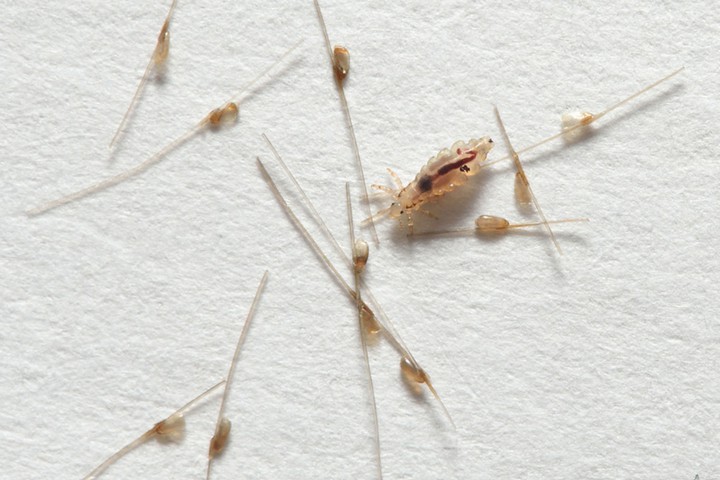
2. Here we have a women combing hair with a lice comb under a magnifying glass.
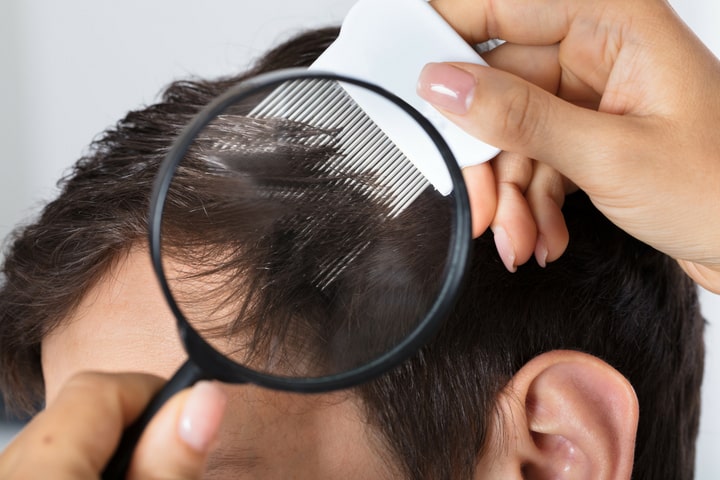
3. This is a picture of one small louse crawling on some white paper.
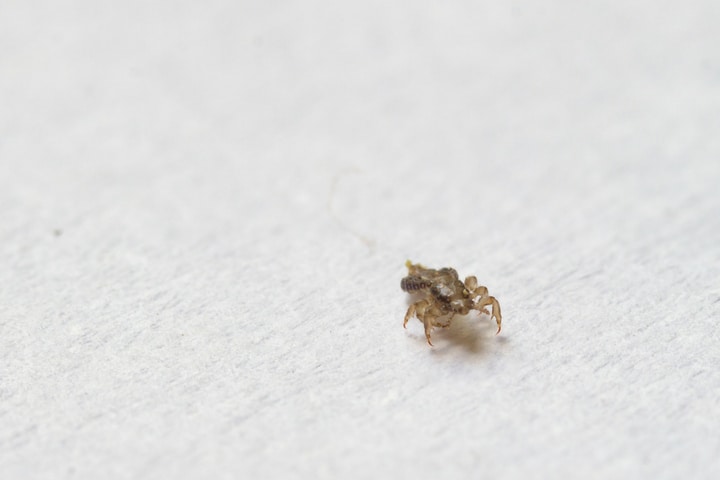
4. This is another picture of a person combing lice eggs and nits out of hair. These combs are specially designed to separate the eggs from the hair follicles.

5. Here you can see a louse full of blood.

6. That's notdandruff, that's lice eggs! People with black or dark hair have much better time of spotting these nasty pests.
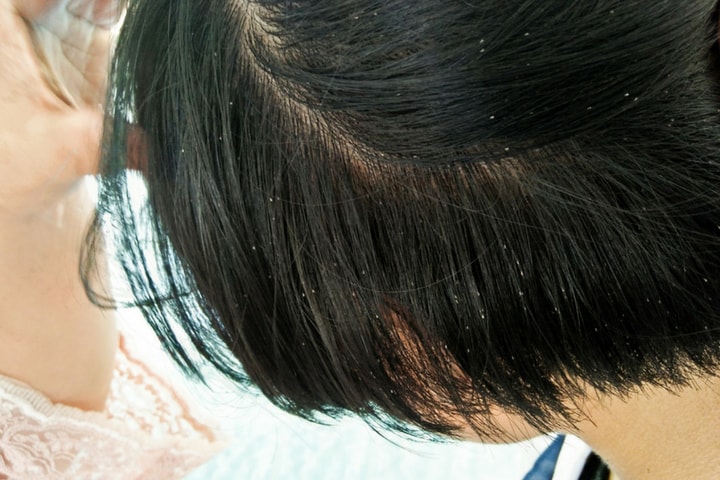
7. Here you can see yet ANOTHER louse with a body full after a blood meal.
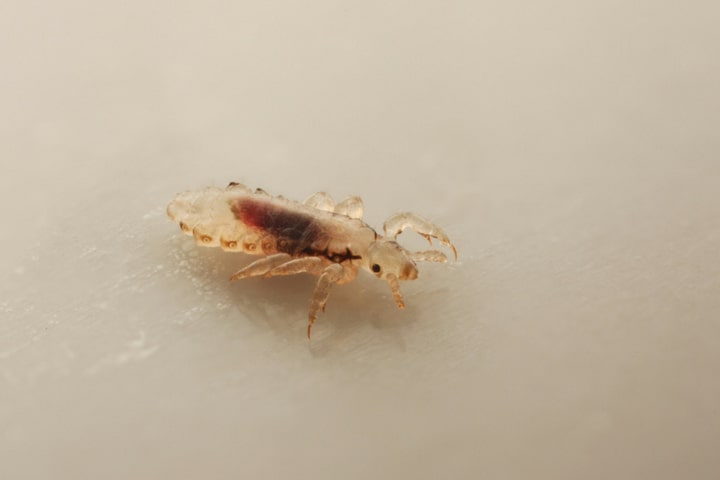
8. Below is a picture of four different lice crawling around in hair magnified to increase visibility.
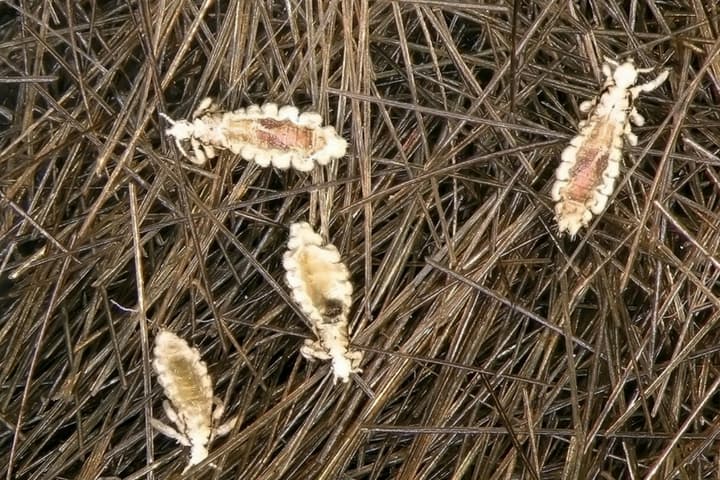
9. Below is a pack of lice up close. The ones up near the top appear to have just had a blood meal and look a bit darker.
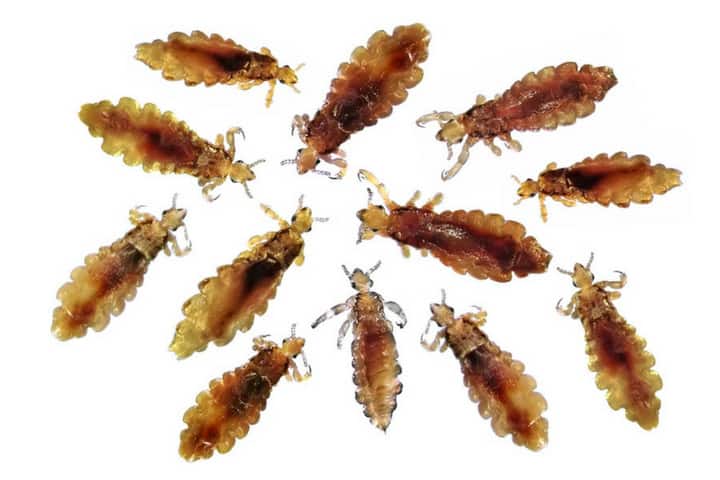
10. Here you can see someone using a comb to dislodge lice eggs from hair follicles. A comb with extremely fine teeth is really the only tool capable of this job.

11. This is an image of one louse crawling on a hair follicle.

12. Here you can see images of lice eggs in a man's hair at the base of his scalp.

13. Lice are very small and only with a microscope can you can get a really good picture of their body.

14. Here's another good photo of three lice crawling through hair. Two of them are a bit darker, which means they've probably had a recent blood meal.

15. This is a really good picture of lice eggs attached to hair follicles.Normal lice shampoosare only good to kill adult lice and nymphs but still have no effect on eggs. You need a comb to remove eggs.

16. Here you can see an image of two lice eggs at the base of this person's scalp.

17. Possibly one of our favorite images if this picture of lice eggs, nymphs, and adults at the end of a lice comb. Here you can also see how close the teeth of the comb are together.

18. Another great image as it gives you a sense of scale. Here you can see adult lice, some nymphs, and a few eggs still attached to these hair follicles.

19. One of our final images is another adult louse crawling through a bunch of bits of hair.
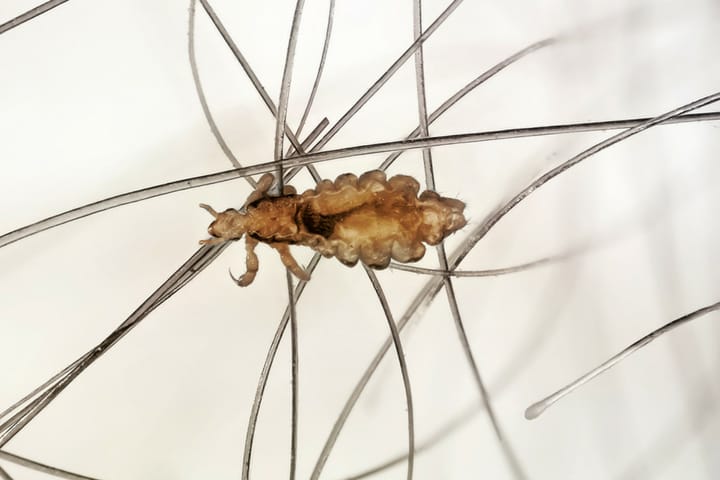

Our #1 Ranked For:Termites,Bed Bugs, and Larger Infestations

Our #1 Ranked For:Ants, Roaches, Spiders, and Rodents Issues

Our #1 Ranked For:Mosquito Removal, Fleas, Ticks, Wasps, And Other Stinging Insects
Lice vs Flea Size Comparison
20. Below is our final image and one of the best we could find that help compare the size of lice and fleas. Both are very small and feed on blood, which makes it difficult to decipher which pest you might be suffering from.
Lice are bit smaller and vastly prefer to live in their host's hair.
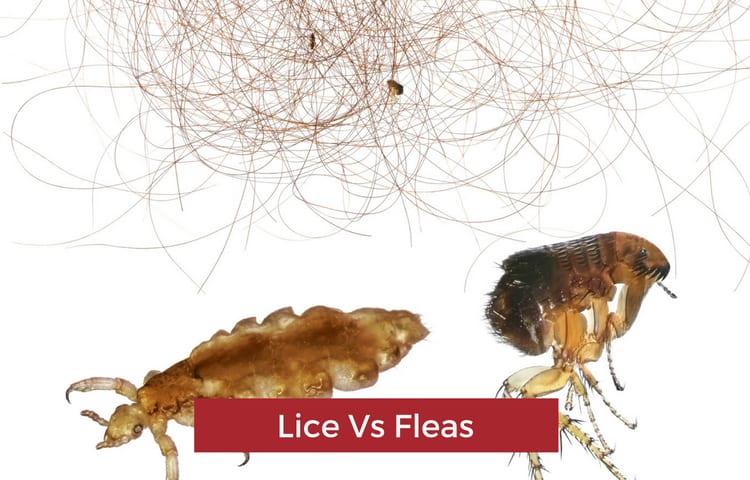
Closing Thoughts About Lice Pictures...
As I'm sure you've seen by now is that lice are VERY small.
Most of the images above are taken with special cameras capable of zooming in with great focus.
Hopefully now you have a new found appreciation for these little guys and can tell them apart from other common pests (like fleas).
Thankfully, lice are very treatable with over the counter shampoos and equipment. Here's alink to our lice removal guide for reference.
Other Lice Guides
Curious about other lice related articles? Check out our other detailed guides to help you deal with your pest problems.
Get Your Free Quote In Seconds
因为害虫防治产品可能是危险的your family if mishandled, we always recommend consulting with an exterminator even if just to ask for advice on how to apply pest control products yourself.
Our pest experts review each company for quality, cost, customer service, safety, and 100’s of other important factors and assess a rating out of 100. Below are our top 3 picks based on that review for pest removal. We’ve set up a direct line with each company so you can get fast free quotes right now.

Our #1 Ranked For:Termites,Bed Bugs, and Larger Infestations

Our #1 Ranked For:Ants, Roaches, Spiders, and Rodents Issues

Our #1 Ranked For:Mosquito Removal, Fleas, Ticks, Wasps, And Other Stinging Insects

